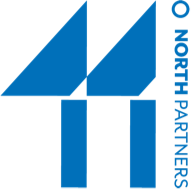Switzer told the graduates, “Often it’s the adversity in your life that gives you the greatest ideas. Sometimes the worst things in your life become the best.”
In our line of work, we call this the “Crisis Paradox” — when a crisis strikes an organization, it is wildly destructive . . . and positively transformational. John F. Kennedy described it this way: “The Chinese use two brush strokes to write the word ‘crisis.’ One brush stroke stands for danger; the other for opportunity. In a crisis, be aware of the danger, but recognize the opportunity.” We have seen the danger and the opportunity in many different crises, at organizations large and small, before and after the advent of social media. A crisis almost always results in some degree of positive change, significantly shaped by the leader’s effectiveness.
We work with leaders who have guided their organizations through significant times of crisis, and leaders who haven’t yet faced a true crisis. They all share one thing in common: they want to feel prepared to lead when crisis hits.
To prepare to lead through crisis, there are simple steps every leader should take:
- Know your risks.If you don’t have a formal risk assessment process, you should at least have a means of reviewing your vulnerabilities on an informal basis once a year. Consider strategic, operational and reputational risks. It’s not possible – or practical – to anticipate every potential scenario, but a thoughtful, cross-functional approach to risk assessment goes a long way in helping your organization identify proactive steps to mitigate and manage risk.
- Plan and train. This doesn’t have to be an unwieldy or costly process. It’s as simple as consistently demonstrating that you recognize the importance of crisis preparation. Show the organization that you’re willing, as the leader, to engage in strategic discussions and decision-making about crisis management. Practice crisis leadership. Convey your openness to feedback. Ask “What if?” of yourself and others. A plan on the shelf or on the hard drive is just a plan – but a core team, with clear roles and responsibilities, armed with basic crisis response checklists and templates, that comes together at least annually to discuss crisis scenarios, is a strategic business investment that pays dividends when the organization faces unprecedented, unexpected challenges.
- Lead from a place of purpose and values.Leading through a crisis is challenging. It can be a time of great sorrow and outrage. Crises take a toll on everyone involved — and it can be tempting, as the leader, to move fast and favor expediency over thoughtfulness. While speed is certainly important in crisis response, it should never supersede thoughtful reflection. Your crisis response should authentically reflect and align with the core ideology of your organization, reinforcing what your stakeholders most value about you. Ideally, your purpose and values are designed to guide your decision-making for all time, including the worst of times. Rely on them to show you the way.
- Follow the Truth-Action-Trust model to guide your crisis response. Be honest and forthcoming; take decisive, informed action, and build trust with stakeholders. This model is shaped by four key trust factors: empathy (putting yourself in the shoes of those affected by the situation and demonstrating that you understand their pain); transparency(communicating what you know when you know it), commitment(conveying that this is serious to you and you are focused on making it right), and expertise(demonstrating that you have the necessary knowledge and capabilities, are seeking appropriate counsel and working with the right experts).
- Be visible. As the leader of an organization in crisis, people inside and outside need to see you, hear from you, and believe that you are solving the problem. Be as transparent as possible. Invite input. Truly listen to different points of view. If you’re shaken and unsure of what to do, you’re not alone. Seek advice from your staff and/or consultants who, ideally, you’ve already identified as your core crisis team.
By definition, a crisis is a time of intense difficulty with the distinct possibility of a highly desirable outcome. It is a moment of truth that tests an organization’s readiness, resilience, and character. Through preparedness, planning and effective leadership, it can also provide an opportunity for renewal, growth and positive transformation. In Kathrine Switzer’s words, your worst crisis can become your best experience.
